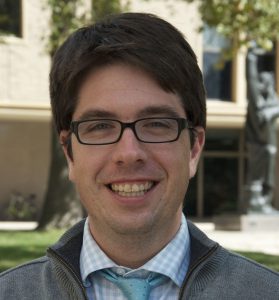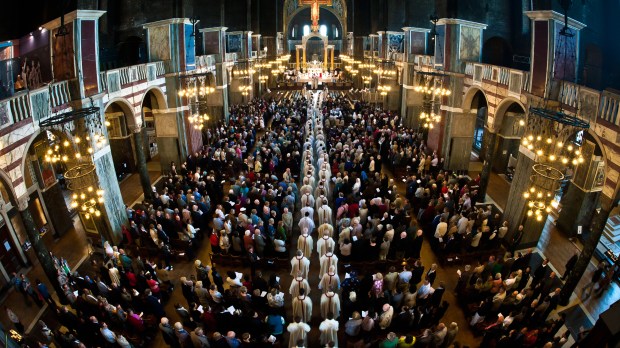The University of Notre Dame’s Church Life Journal has initiated a series of articles addressing “Millennials and the Mass”. As Aleteia recently reprinted one piece from that collection, it seemed like a good time to chat with Associate Professor Tim O’Malley — director of the Notre Dame Center for Liturgy, author, and founding editor for Church Life — to learn more about what Church Life hopes to begin with this project.

What was the impetus for this focus on millennials and the liturgy? What are you hoping to accomplish?
We began the series on the Mass for Millennials because one is always hearing about declining church attendance among this generation (of which I’m on the earliest end). While we’re deeply concerned about decline in Mass attendance in particular, we wanted to feature Millennials who actually like Mass. Who go to Mass for all sorts of different reasons. And who somehow, through a lifetime (thus far) of practice, have begun to see the world differently in the process.
We hope the series establishes that going to Mass is actually evangelizing for the Church. I’ve often heard in pastoral circles today that we first need to get people to fall in love with Jesus, then to invite them to the Eucharist. There is something true about this. But, in our series, we want people to see how a group of 18- to 23-year-olds actually have fallen in love with Christ through the Mass. They experience Christ’s transforming presence through the opening antiphon of the Eucharist; through the self-offering they make in the Eucharistic prayer; through the silence they enjoy after Communion.
Have you found with your students that there is a genuine curiosity to go more deeply into understanding the Mass?
Students at Notre Dame are interested in the Mass and all the sacraments. I’m teaching a course next semester on the sacrament of Marriage, and there are 80 students signed up to take the course. They’re looking for an intelligent apologetic for the Church’s practices of prayer. They want to know why their parents, their religious educators, their youth ministers emphasized the necessity of going to Mass.
What percentage of your students would you say come into Notre Dame with an understanding of the Mass that hasn’t moved much since their First Communion?
I don’t think the Church has adequately nourished the imagination of young adults to see what happens in the Mass. Part of this is the fault of our parishes, which continue to celebrate the liturgy so poorly. But part of it is a catechetical problem: how can we renew the imagination of emerging adults so that they see the Mass as meaningful for their lives and transformative of the human condition itself?
Notre Dame has a symposium on liturgy coming in June that is concerned with the new evangelization — how do these things all fit together?
We’re holding a Symposium on Liturgy and the New Evangelization at Notre Dame from June 20-23, 2016 to pick up on many of these themes. Everyone in pastoral ministry is talking about small groups as a means to evangelization. They’re talking about person-to-person ministry. But, there is a sense that the largest number of Catholics can be reached through an encounter with Christ in the liturgy. In the Mass. In the Liturgy of the Hours. In the practices of the Church. If we give up on the Mass as an element of the Church’s life that can “evangelize,” then we’re also ignoring the role that attending Mass had on figures like Dorothy Day and Thomas Merton in the 20th century.
Liturgy is integral to the New Evangelization. It helps us see how the Church is not simply preaching an abstract reality. But what we preach, what we celebrate, what we hand on is real. Very real. Take for example when we sing the Sanctus—the Holy, Holy, Holy. This is not just play-acting on our parts. It is not a game of pretend. The Church really sees that our liturgy, the practice we perform in our parishes, is related to what takes place in heaven. The reign of peace and justice, the reign of love: this heavenly world becomes our world at every Mass, at every Liturgy of the Hours, at every Rite of Penance. Every time we celebrate the liturgy, we’re letting the reality of heaven become our reality. We’re like a character from C. S. Lewis’ The Great Divorce getting used to the real. And even if we don’t always see this or feel that this is what is happening at Mass, it happens nonetheless. God’s world becomes our world. Our world become God’s world.
[Editor’s Note: Of additional interest, read Tom Hoopes piece on watching young Catholics graduate from college.]
Timothy P. O’Malley, PhD, is director of the Notre Dame Center for Liturgy in the Institute for Church Life and associate professional specialist, University of Notre Dame. He is the author of Liturgy and the New Evangelization: Practicing the Art of Self-Giving Love and editor of the Center for Liturgy’s blog, Oblation.

